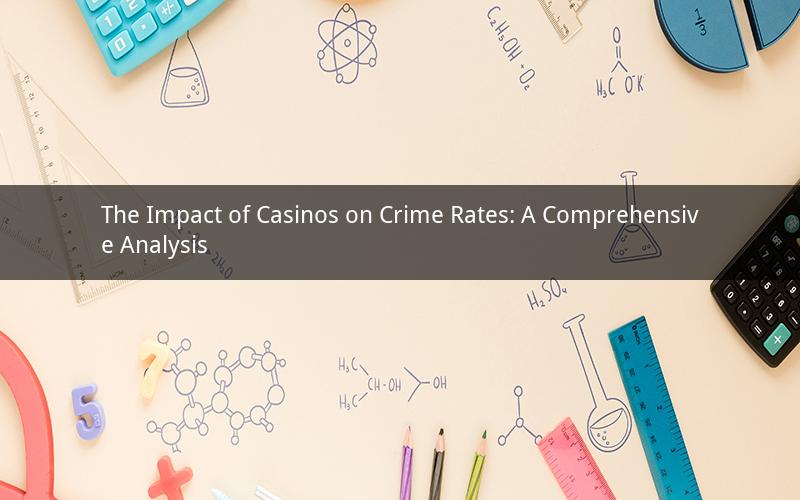
Introduction:
Casinos have long been a subject of debate regarding their impact on crime rates. While some argue that casinos attract criminal activities, others believe they bring economic benefits and reduce crime. This article aims to explore the various perspectives on this topic and shed light on the complex relationship between casinos and crime.
1. Theoretical Framework:
Theoretical perspectives on the relationship between casinos and crime can be categorized into two main schools of thought: the "crime magnet" theory and the "crime displacement" theory.
1.1 Crime Magnet Theory:
Proponents of the crime magnet theory argue that casinos act as a magnet for criminal activities. They claim that the presence of large amounts of money, high levels of gambling, and a diverse population attract individuals involved in illegal activities such as theft, fraud, and drug trafficking.
1.2 Crime Displacement Theory:
On the other hand, supporters of the crime displacement theory contend that casinos may displace crime from other areas. They argue that the economic benefits generated by casinos can lead to improved infrastructure, increased employment opportunities, and enhanced public services, which in turn reduce crime rates in surrounding areas.
2. Empirical Evidence:
Empirical studies have produced mixed results regarding the impact of casinos on crime rates. Some studies have found a positive correlation between the presence of casinos and increased crime rates, while others have failed to establish a significant relationship.
2.1 Positive Correlation:
Research conducted in various regions, including Las Vegas, Atlantic City, and Macau, has indicated that the opening of casinos is often accompanied by a rise in crime rates. These studies attribute the increase to factors such as the influx of individuals with criminal backgrounds, the availability of easy money through gambling, and the potential for illegal activities related to the casino industry.
2.2 No Significant Relationship:
Other studies, however, have failed to find a significant relationship between casinos and crime rates. These studies argue that the presence of casinos does not necessarily lead to an increase in crime, as other factors such as socioeconomic conditions and law enforcement play a more crucial role in determining crime rates.
3. Economic Benefits and Crime Reduction:
Despite the concerns regarding the impact of casinos on crime rates, many argue that the economic benefits they bring can contribute to crime reduction.
3.1 Job Creation:
Casinos create numerous job opportunities, providing employment for individuals from various backgrounds. This can lead to a decrease in unemployment rates, which in turn reduces the likelihood of individuals engaging in criminal activities.
3.2 Increased Revenue:
The revenue generated by casinos can be used to fund public services and infrastructure improvements. These investments can contribute to a safer and more livable community, thereby reducing crime rates.
4. Public Safety Measures:
To mitigate the potential increase in crime associated with the presence of casinos, governments often implement various public safety measures.
4.1 Increased Police Presence:
Casinos are often equipped with increased police presence to ensure public safety. This can deter potential criminals and provide a sense of security to visitors and residents.
4.2 Enhanced Security Systems:
Casinos invest heavily in security systems, including surveillance cameras, metal detectors, and armed security personnel. These measures help prevent and detect criminal activities within the casino premises.
5. Conclusion:
The relationship between casinos and crime rates is complex and multifaceted. While some studies suggest a positive correlation between the presence of casinos and increased crime rates, others argue that the economic benefits they bring can contribute to crime reduction. It is essential for policymakers and researchers to consider both perspectives and implement appropriate measures to ensure public safety and maximize the benefits of the casino industry.
Questions and Answers:
1. What are the main theoretical perspectives on the relationship between casinos and crime rates?
Answer: The main theoretical perspectives are the crime magnet theory, which suggests casinos attract criminal activities, and the crime displacement theory, which argues that casinos displace crime from other areas.
2. What are the potential economic benefits of casinos that can contribute to crime reduction?
Answer: The potential economic benefits include job creation, increased revenue for public services and infrastructure improvements, and enhanced public safety measures.
3. How do casinos contribute to public safety?
Answer: Casinos contribute to public safety through increased police presence, enhanced security systems, and a sense of security provided to visitors and residents.
4. Can the presence of casinos lead to a decrease in crime rates?
Answer: While some studies suggest a positive correlation between casinos and increased crime rates, others argue that the economic benefits they bring can contribute to crime reduction. The relationship is complex and depends on various factors.
5. What measures can be implemented to mitigate the potential increase in crime associated with the presence of casinos?
Answer: Measures include increased police presence, enhanced security systems, and the use of revenue generated by casinos to fund public services and infrastructure improvements.